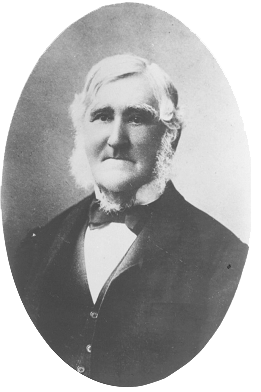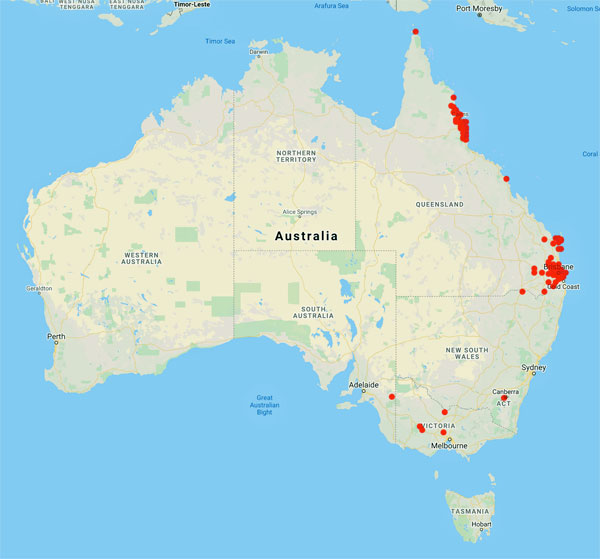
Council of Heads of Australasian Herbaria
Australian National Herbarium
Biographical Notes
 |
Council of Heads of Australasian Herbaria |
 Hill, Walter (1820 - 1904)
Hill, Walter (1820 - 1904)Born in Scotsdyke, Scotland, on 31 December 1820, died in Canobie Lea, Eight Miles Plain, Queensland, on 4 February 1904.
Appointed first Superintendent of the Brisbane Botanic Gardens in 1855, and first Colonial Botanist of Queensland in 1859. He retained these positions until 1881. Hill undertook expeditions to Cape York (1862) and along the north-east coast to Mossman and the Daintree (1873), climbing Mt Bellenden-Ker. He developed a small herbarium and laid the basis of a botanical library. The herbarium was largely lost to termites and damp, although a few specimens survive in BRI, and duplicates exist in FI, K and MEL.
The history of the Queensland Herbarium, as an institution, dates from 1855, four years before Queensland became a separate Australian colony. In that year, Walter Hill was appointed Superintendent of the Botanic Gardens at what is now known as Gardens Point in central Brisbane. At separation in 1859, Hill was appointed Colonial Botanist as well as Director of the Brisbane Botanic Gardens, positions he held until his retirement in 1881. Hill was interested primarily in the introduction of economic plants such as sugarcane and fruit trees but he also collected native plants from many parts of the State. However, he was unable to establish a working herbarium of specimens in Brisbane due to the poor state of the Gardens' buildings and lack of time due to the demands of his other Gardens' activities. He therefore sent most of the plant specimens he obtained to Sir William Hooker and later Sir Joseph Hooker for the herbarium of the Royal Botanic Gardens, Kew, London, England, or to Baron Ferdinand von Mueller for the herbarium of the Royal Botanic Gardens in Melbourne, Victoria. Hill's books, however, were transferred to the Queensland Museum on his retirement and later became the nucleus of the present Queensland Herbarium library.
Frederick Manson Bailey, in his obituary for Hill in 1904, described him as "more of a gardener than a botanist".
It appears that the quality of Hill's work declined toward the end of his career, to the point of his termination by enforced retirement in 1881 by the Secretary of Lands, and with accompanying accusations of theft and wilful damage (Legislative Assembly 1881), the accusations were later 'proved' and accepted by the board set up to investigate the matter, but no action was taken by the Government on their decision (Brisbane Courier 1881). Hill retired on a pension to his property 'Canobie Lea' south of Brisbane where he propagated and grew tropical fruits.
Source: Extracted from: A.E.Orchard (1999) A History of Systematic
Botany in Australia, in Flora of Australia Vol.1, 2nd ed.,
ABRS. [consult for source references]
With additional information from:
Holland, A. (2005), Queensland Herbarium, in ASBS Newsletter, 122, March 2005.
Dowe, John Leslie (2016) 'Walter Hill: his involvement with palms (Arecaceae), and notes on his herbarium and the expeditions of 1862 and 1873', Austrobaileya 9(4): 489-507.
Portrait Photo: Queensland Herbarium, ex A. Holland (2005), in ASBS Newsletter, 122, March 2005
Data from 583 specimens
